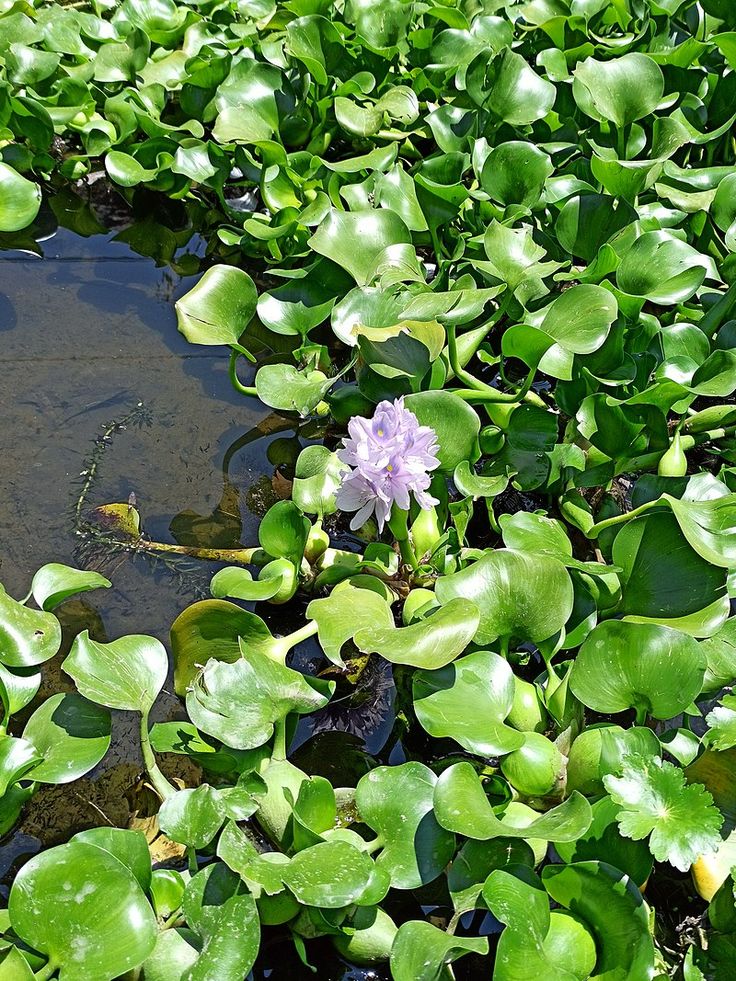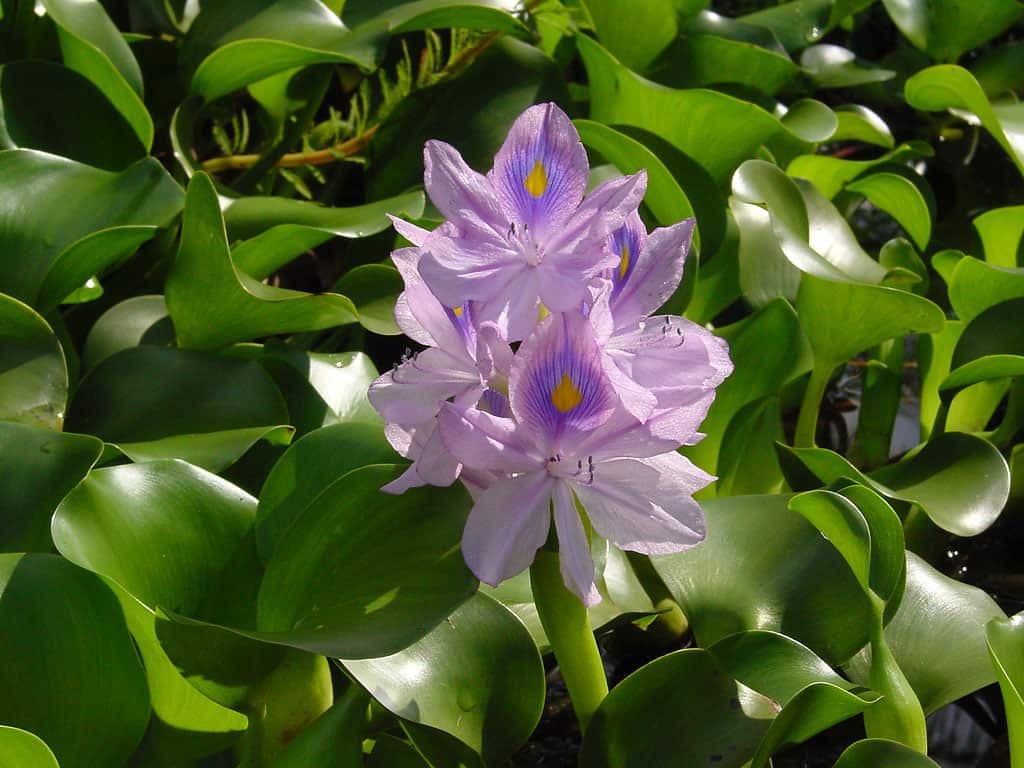Water Hyacinth
weed identification
Eichhornia crassipes is a large (up to 2 m above the water and 1 m below) floating freshwater plant with hollow stems and roots that trail underwater in a dense mat or in longing hanging strands. The leaves form in rosette clusters. Flowers are purple, bluish or mauve with a yellow spot surrounded by a darker blue or purplish area on the upper petal and grow on a spike that contains up to 35 flowers.
Grows in freshwater (preferably still or slow-moving) and can spread rapidly due to its high tolerance to extremes of nutrient supply, pH level, temperature, and can even grow in toxic water. Water Hyacinth invasion is facilitated by water bodies that are enriched by agricultural chemicals, sediments from catchment erosion, domestic effluents and plant nutrients. Water hyacinth is widely considered to be the world’s worst water weed.
The seeds can remain viable for 15-20 years but the main method of reproduction is vegetatively.
They can be spread by boats and wind. A single plant under ideal conditions can produce 3,000 others in 50 days, and cover an area of 600m2 in 12 months.
Introduced as an ornamental plant, Water Hyacinth also has a number of other uses but this cannot compensate for its overall negative impacts.
What does Water Hyacinth look like?
Disadvantages of Water Hyacinth
Full coverage of a pond or dam by Water Hyacinth can cause significant problems such as:
- Stopping oxygen diffusion
- Shades out all submerged vegetation preventing further growth and causing death
- Causes fish and other aquatic life death
- Provides breeding ground for mosquitos
- Changes the water chemistry to favour harmful algae and bacteria
- If left untreated, Water Hyacinth can render the water unusable and make treatment far more costly than if initially dealt with
treatment
AQ200 Aquatic Herbicide + Wetting Agent – Chemical Herbicide designed to kill free floating weeds quickly. Use on mild to severe infestations.
Aquatic Weed Rake – Instantly removes free floating weeds. Use on mild to moderate infestations or on sensitive water bodies.
Aquatic Harvesting – Large amphibious machine that clears the surface of floating aquatic weeds. Book this service for severe infestations or for larger water bodies.
prevention options
Aerating Fountains – Reduces the severity and likelihood of aquatic weed infestations. Use in any body of water.







